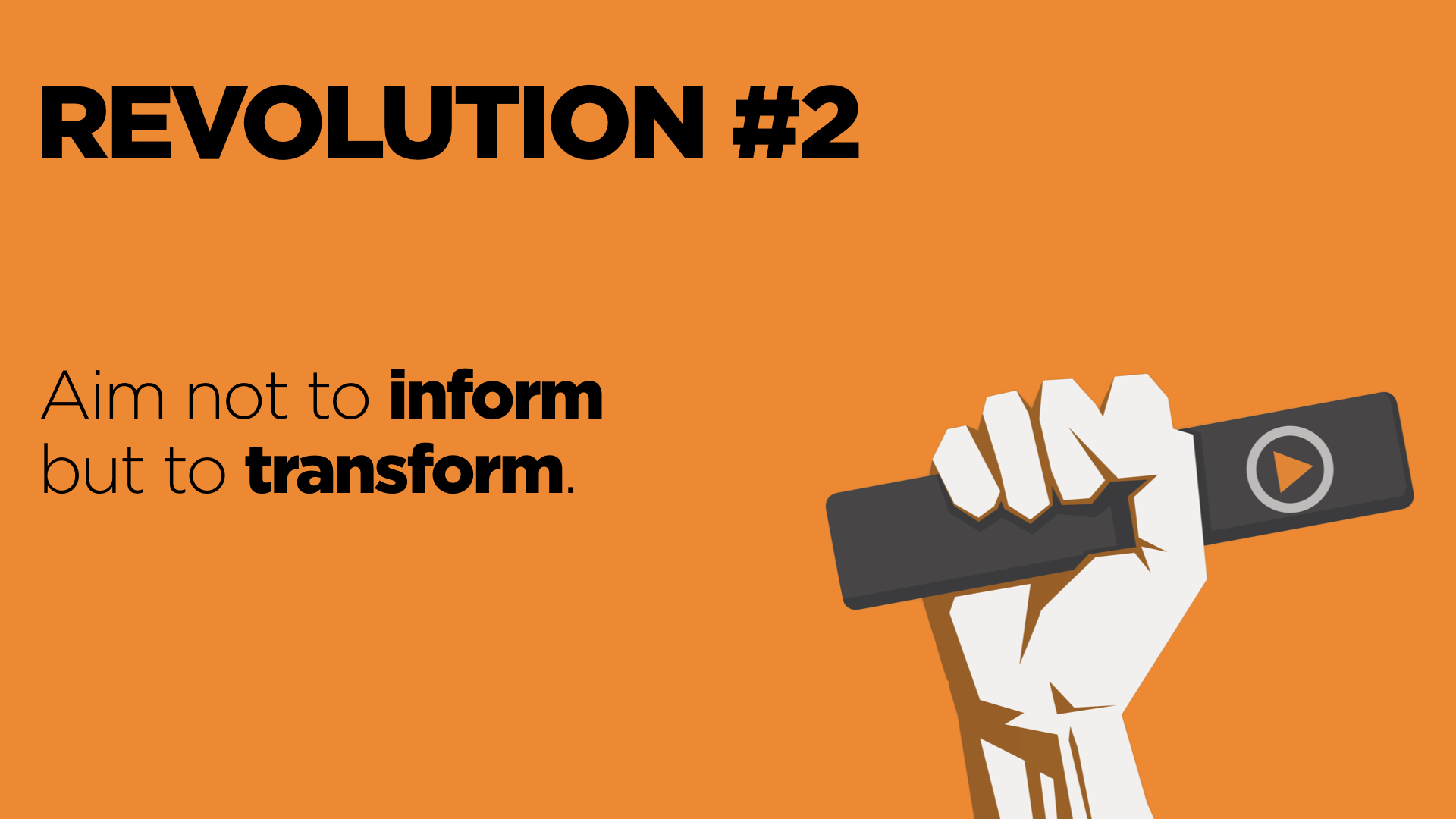What is your presentation’s primary objective? Many presenters treat their talk as if it were a dental appointment: their sole aim is to get through it as quickly and painlessly as possible, escape mostly unharmed, then drink something cool or strong, or perhaps both.
Other presenters might say their aim is to share information: for example, to explain sales targets, or business results.
It’s important to dig a little deeper, and when it comes to objectives, the most useful word is ‘why’. Why are you explaining your sales targets? Is there perhaps something you want your audience to do differently? Perhaps just by knowing the targets they will behave differently, or feel more motivated to achieve them. In which case, you’ve changed them – and maybe that change was your real objective.
Most presentations fail because they simply try to transfer information, which is far more effectively done via a written document. Experiments have demonstrated that people remember more of the information they read than the information they hear, as long as they have quiet time to read.
So should you be presenting at all? If your sole aim is to move information between brains, then forget about an oral presentation: give them a written document and time to read it (and ideally a coffee too), and you’ll find that far more effective for everyone.
However, a presentation is an excellent way to change what people believe, feel and do. If you don’t change your audience in any way, then you’ve wasted your time, and worse still, you’ve wasted theirs.
Your objective is not to inform your audience, but to transform them.

For example, when Steve Jobs launched the iPhone in 2007, his presentation’s aim was not to share information – number of pixels, processor speed, etc. – but on one hand to create desire, and on the other hand to make people buy an iPhone, and write articles to recommend it. He wanted to generate feelings and actions. Of course his presentation included information, but only the information he required to achieve those transformational objectives.
To look at his objectives simply, if his audience had remembered all the iPhone’s specifications but did not want to buy it, would that have been a successful presentation? No. But if they forgot all the details yet still felt a strong desire to buy it, would that have been a success? Yes. So it’s clear that the objective is not transmitting information but generating transformation.
Yet far too many businesspeople still approach a presentation with the sole aim of sharing information. If you find yourself in that situation, ask yourself why they need this information and what transformation you aim to achieve. If there is no transformation required but you still need to share information, give them a proper document to read because that’s so much more effective than an oral presentation, and takes less of their time.
The world will be a better place when every presentation has transformational objectives, and when people share information in standalone documents instead of quickly-forgotten oral presentations. Join the Business Presentation Revolution, and be part of the solution.
This article contains extracts from Business Presentation Revolution, by Phil Waknell, published in July 2021. Download the introduction free at https://www.ideasonstage.com/resources/books/business-presentation-revolution-book/ and join the revolution!
For more on why presentations should rhyme with transformation, check out Phil’s TEDx talk below.
